Latest News
Kitchen Chat and more…
Kitchen Chat and more…
Grain whisky distilleries don’t get as much coverage and I think it’s quite a shame. There are many exciting innovations that may seem foreign to a traditional pot still Single Malt distillery. Today, I am starting with Girvan!
The grain distillery is situated near the coastal town of Girvan, which it is named after. William Grant & Sons (WGS) owns the Girvan distillery. WGS also own Glenfiddich, Balvenie, Kininvie, Alisa Bay and Hendricks in Scotland. Girvan distillery is in a site just over 1.5 kmsq that also contains Ailsa Bay distillery, Hendrick’s gin distillery, company offices, a cooperage and more than 40 warehouses.
Before Girvan distillery started, the Distillers Company Limited (DCL) was supplying WGS with grain whisky for their Grant’s Blended Scotch. But then, WGS aired an advertisement on the television for their Grant’s Standfast Blended scotch, shown below. DCL saw that move as direct competition and threaten to cut off their supply. Given that this is the mid 20th century, where blends reign supreme. Losing their supply of grain whisky will affect their ability to continue producing Grant’s Blended Scotch.
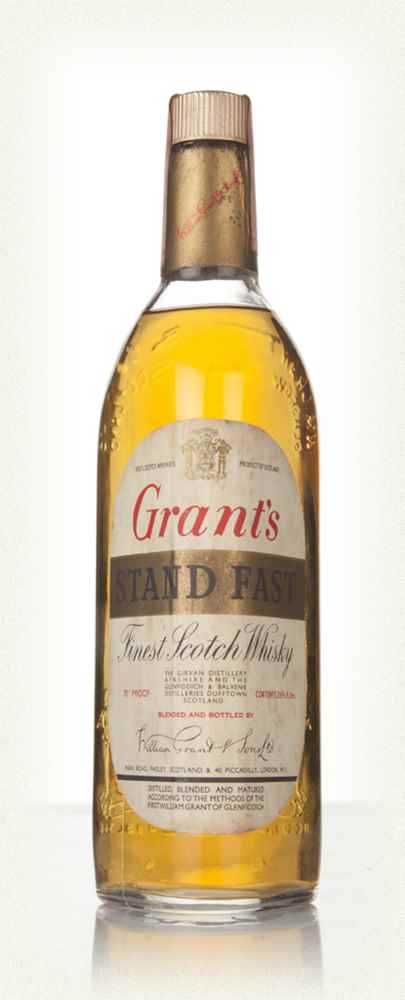
After that dispute, WGS wanted their own supply of grain whisky and they decided to build the Girvan distillery. Within nine months, the construction was complete and the distillery was functional! Charles Gordon, who oversaw the construction of Girvan distillery, had the first spirit distillation run on Christmas day of 1963. This choice of the day pays homage to Charles Gordon’s great grandfather, William Grant and Glenfiddich distillery, which also first ran their stills on Christmas day as well. Today, the distillery operates a continuous process 24/7 and also has a capacity of over 100 million litres of pure alcohol per annum! How does this distillery achieve this feat? Let’s take a look at the production to find out!
Girvan uses approximately 10% Malted Barley and 90% Wheat in the grain bill for several reasons:
1) Scotch Single Grain must have some amount of Malted Barley in it as dictated by the SWA.
2) The enzymes in malted barley to help break down starch into fermentable sugars.
3) Wheat is inexpensive.
Like many grain distilleries, the wheat Girvan distillery uses for grain whisky distillation is unmalted, which saves money and time as there is no malting process for the wheat. The malted barley and wheat go through separate mills and mashes with hot water separately as well. The slurry is then mixed together before the fermentation.
Unlike a traditional pot still distillery, the mash does not go through filtration into a liquid wort before fermentation! Instead, these grain solids, that would have normally been “draff”, mix with the sugary liquid mixture to form a porridge-like slurry.
This mash slurry then ferments in one of 29 fermentation vessels for around 60 hours. After two and a half days, the “wash” slurry is around 10-11% abv. The slurry then enters the column still.
Girvan has a handful of column stills but some of them have been decommissioned. No. 1 Apps (Apps short for Apparatus) was the first Coffey still that was running since the distillery started in 1963, until its decommissioning in 2016. No. 2 Apps and No. 3 Apps are also decommissioned.
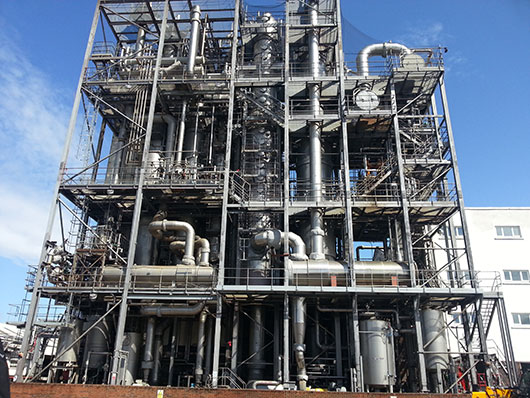
The currently running stills are No. 4 Apps and No. 5 Apps, which uses a Multipressure System (MPS) that the distillery started installing in 1992. This MPS technology allows for vacuum distillation, which means the column still is operating under atmospheric pressure. In other words, this lower pressure distillation means that ethanol will boil at a lower temperature, a bit like how water boils below 100°C when one is up high in the mountains where the air pressure is lower. You can see a video about that here!
This MPS vacuum distillation help saves energy as well, as the column operates at a lower temperature!
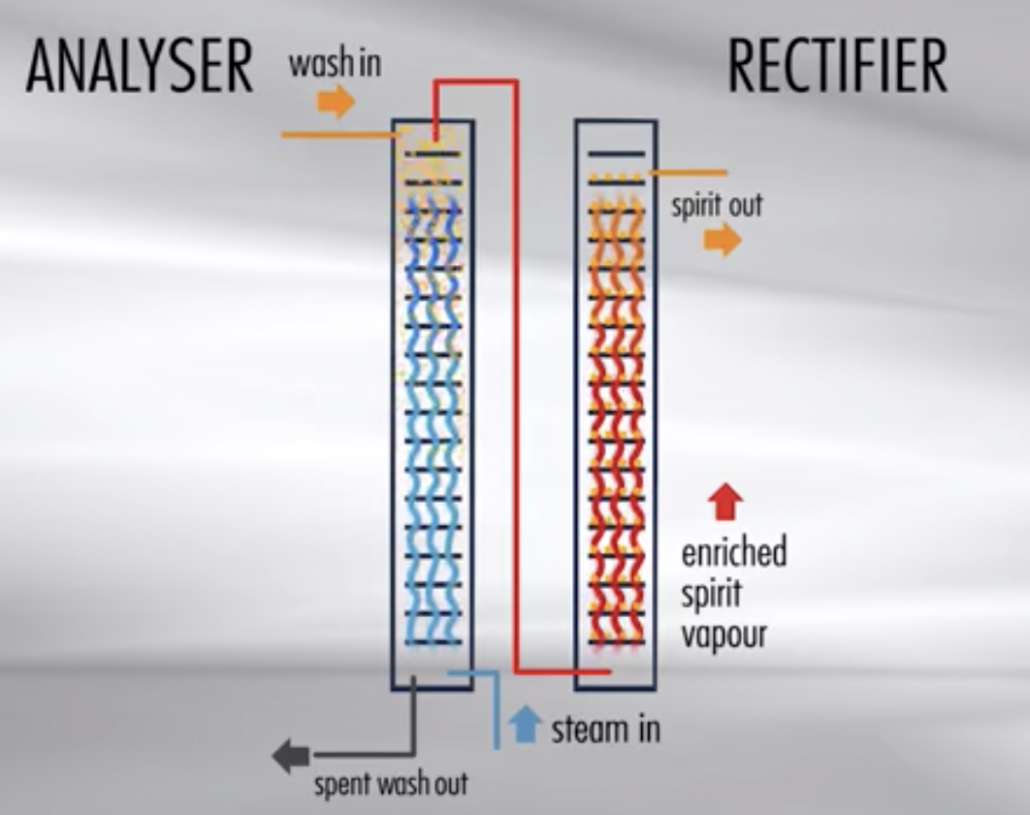
After the fermentation, the slurry enters through the top of the column, as shown in the diagram above. At the bottom of the analyser section, the column is heated by direct steam injection. That is to say, the hot steam interacts and heats the slurry directly, with solids and water flowing to the bottom whilst the alcohol vapours and congeners (flavour compounds) rise to the rectifying section. This separates the grain solids from the alcohol and congeners. To help visualise this process, I recommend the video below from Girvan distillery!
The distillers take precaution to ensure the wash entering the still is approximately 80°C and below 86°C. This tight control on the temperature is due to the compromise of wanting a higher temperature for faster distillation and wanting a temperature below 86°C so that the congeners and grain solids will not burn. This not only ensures a fruiter grain spirit as the congeners do not burn but also ensures process safety!
In the rectifying section, the fusel oils are also taken away, which will
1) Allow the final distillate to be softer.
2) Prevent a build-up of fusel oils in the column to ensure smooth continuous operation
3) Be sold to the cosmetics industry and reduce the waste Girvan produces
The stainless steel columns also have sacrificial copper to help purify the distillate similar to a copper pot still in a single malt distillery. However, the sacrificial copper unit needs to be replaced like a shaving cartridge. Below is a photo of sacrificial copper packings from Chris Burgess, Distilleries Process Leader at WGS.
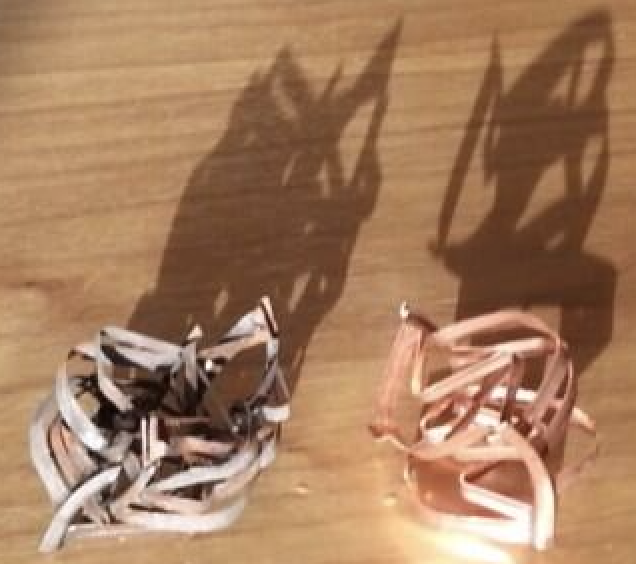
Girvan is a prime example of a Green Distillery. Remember all the grain solids that fall to the bottom of the rectifying section? All that biological by-product are used to make biogas, which can then help power the distillery itself. In fact, this process is so efficient that it not only meets the 4.8MW power demand of the distillery but sends the excess 2MW of power back to the power grid to power residential households!! That is truly amazing!
Now here’s my biggest issue with Girvan Distillery: No Visitors Centre! >:(
This remarkable eco-friendly distillery which was the first to implement the MPS system back in 1992, truly deserves praise and attention. Furthermore, planning a steady-state continuous distillation requires careful planning to make sure heat and materials (like grain solids and fusel oils) do not accumulate, and everything runs smoothly. This ensures product quality, efficiency and a low carbon footprint!
Now hopefully they release more Girvan, maybe a quarter cask or a sherried octave! <3
Girvan Official Website.
Scotch Whisky Cereals Technical Note – 3rd Edition (Scotch Whisky Association)
Girvan Distillery decommissions No.1 Apps (Spirits Business)
Sustainable Planet: Refine Fuel Consumption by Paul Studebaker.
Sustainable Energy using Anaerobic Digestion of By-Products (University of Strathclyde).
How to make greener whisky? Power Grid Internation.
Whiskypedia: Girvan.
Not Backing Down By Gavin Smith (Whisky Magazine).
Tom’s Whisky Reviews – Girvan Distillery Tour.
Distillery Stories: The Girvan Distillery by Greg (Great Drams).
Distillery Visit: Girvan (Whisky for Everyone).
Girvan Distillery (Miss Whisky).
Earlier in August 2020, Whiskygeeks had a chat with Managing Director of Origin Spirits Patrick Shelley. Origin Spirits has in its portfolio the Ornabrak Single Malt Gin, Kalak Single Malt vodka and the Currach Kombu Irish Whiskey.
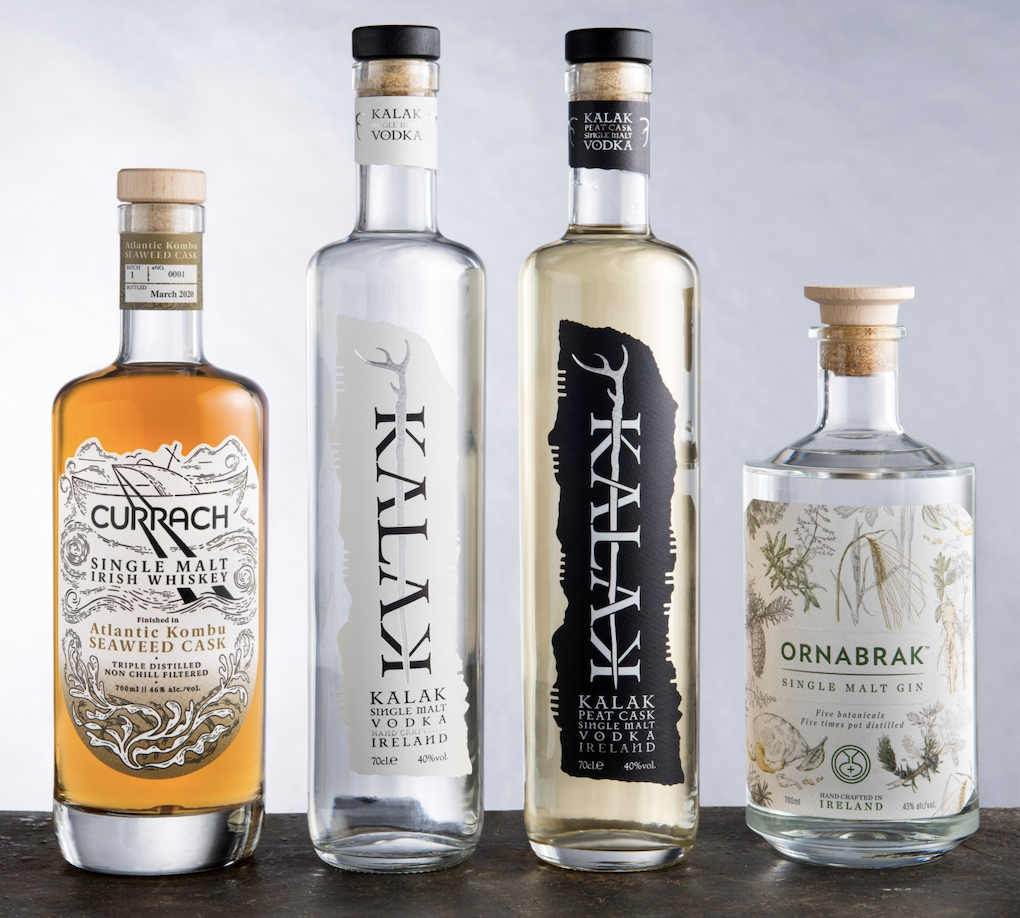
Back in 2010, Patrick was living in Russia, working for LVMH (Moët Hennessy Louis Vuitton SE) which owns Glenmorangie and Ardbeg distillery since 2004. And of course, in Mother Russia, the vodka culture is strong there. But the vodkas out in the market then was not to his taste. To get him through these times, he had drams of peated Scotches. *coughArdbegcough* This later inspired Patrick to want to design a vodka with personality, texture and flavour; a vodka he could enjoy! His love for peated Scotches later inspired the peat cask vodka!
With his time in LVMH, he gained much wisdom and experience which would help elevate Origin Spirits to where it is today. Patrick had three cornerstones in Origin Spirits:
Patrick works with West Cork distillers to create unique products that Origin Spirits offers. Patrick talks fondly about Director of West Cork Distillers, Dr John O’Connell, who holds not just one but two PhDs! Dr O’Connell saw some potential in Patrick’s ideas and was eager to help make Patrick’s ideas a reality!
Under LVMH, some of the brands Patrick used to work for had decades of history with tales abound. As a fresh new company, Patrick had instead created a story around the product, Kalak, weaving Irish folklore and gods with this beautiful spirit. You can read more about here!
Patrick wanted to use 100% Irish malted barley for several reasons. Even though malted barley cost around three times as much as other grains, Patrick wanted a quality product with personality. It also pays homage to the terroir of Irish local barley and a quality ingredient.
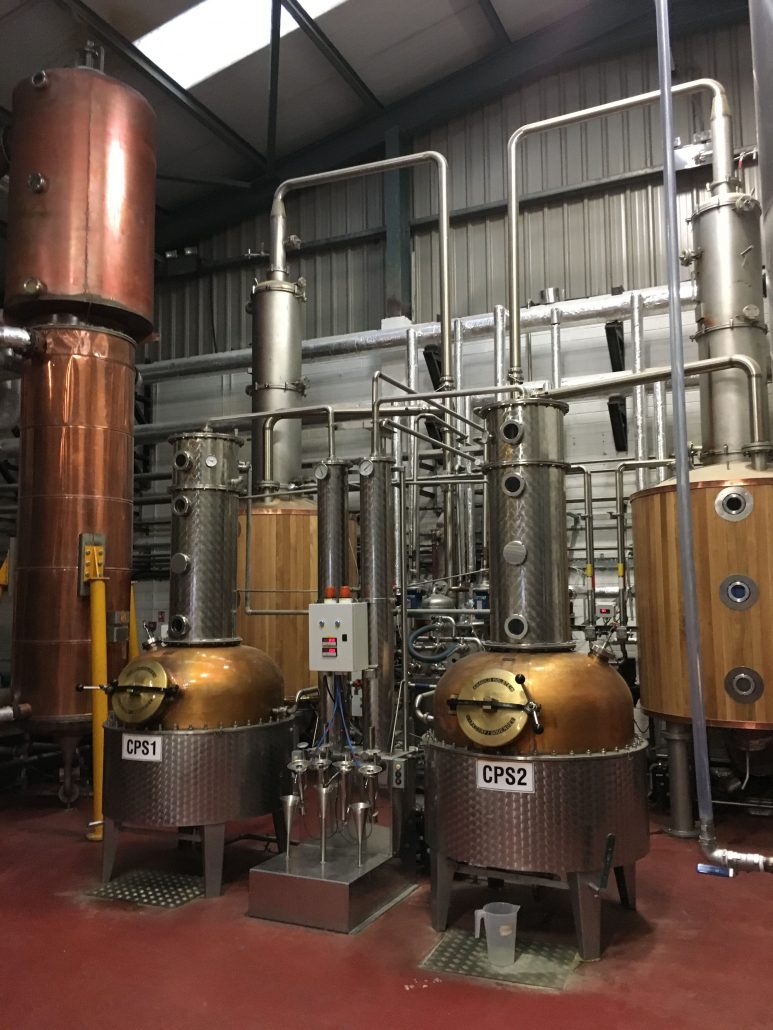
In West Cork distillers, malted barley is milled on site. This grist meets 63°C water in the mash tun and spends 2 hours mashing for sugar extraction. Heat exchangers then cool down the sugary liquid called wort to 27-29 °C. Distillers yeast is then added for inoculation. The fermentation lasts 96 hours, which is twice the amount of time as some Scotch whisky distilleries. This longer fermentation time allows for ester formation and lactic acid fermentation which produces fruitier and more complex flavours in the spirit. After 4 days of fermentation, the strong beer, or wash is at a whopping 11-12% abv.
The wash then goes into copper pot stills for distillation.. 3 times distilled for the whiskey, 4 times for the gin and 5 times for the vodka!
The casks used for Origin Spirits are not used for maturation more than twice. So far, Origin Spirits are only using American White Oak for their cask maturation. The casks Origin Spirits uses comes from the Kelvin cooperage in Kentucky.
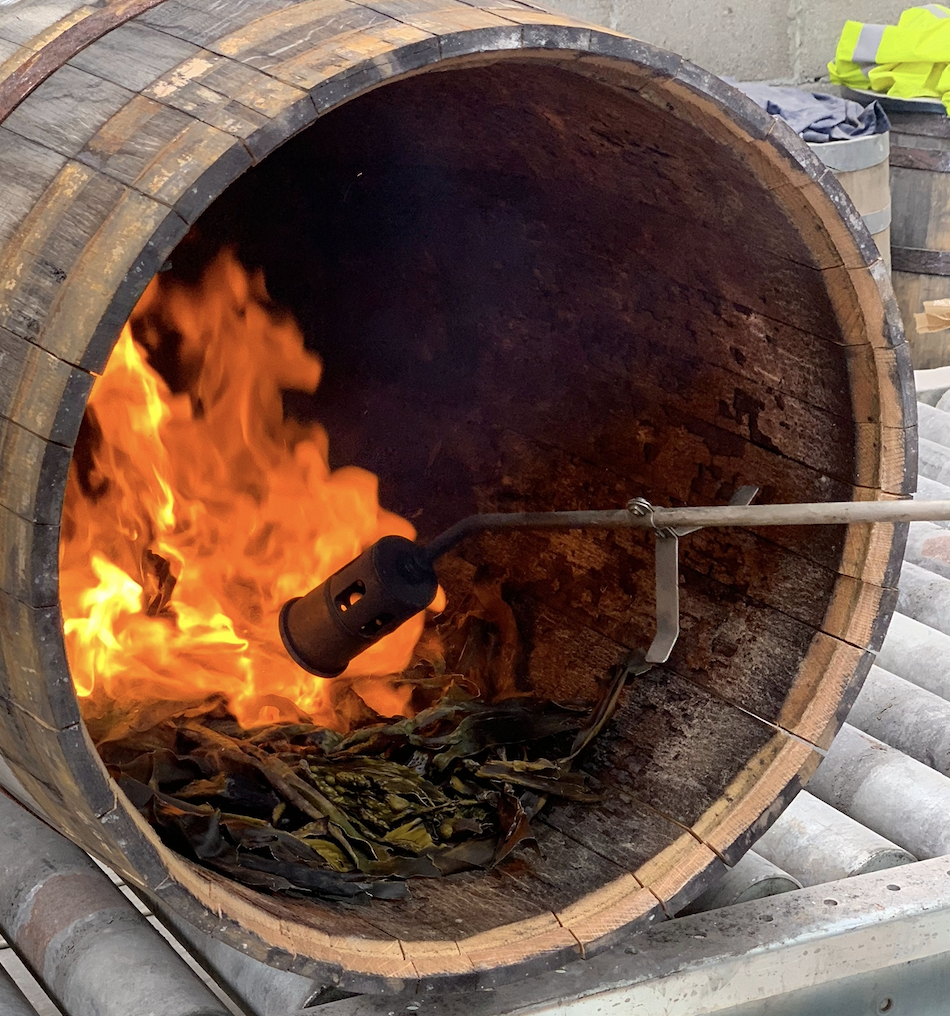
Patrick stumbled on the idea of using seaweed to char the casks, which serves as a fuel source for the charring and imparts umami flavour to the oak. This marks Currach, the Kombu Irish Whisky, with the terroir of both the sea and land with Irish seaweed and barley. For Currach, Patrick prefers using virgin oak to bourbon casks as the bourbon flavours in the cask might interfere with the delicate umami flavours from the seaweed. Aged in ex-bourbon for 3-4 years then 3-month finish in virgin oak, as it maximises the kombu flavour, mellows the spirit and ensures the whiskey does not get too oaky.
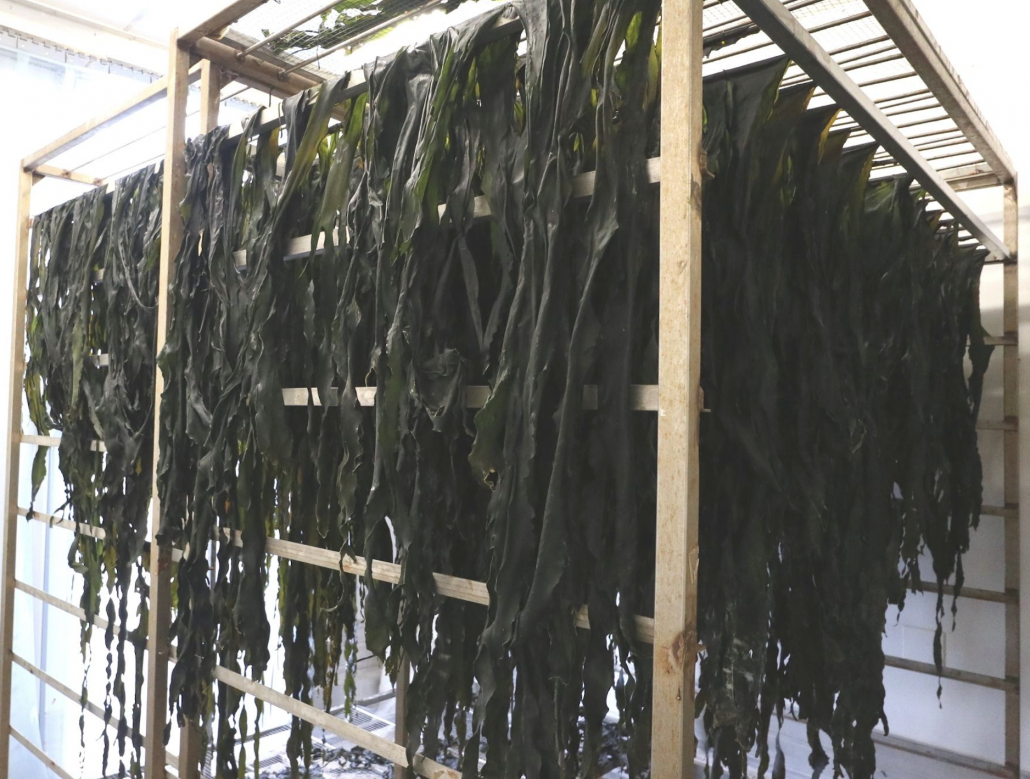
The kombu used for the charring for Currach is a type of brown seaweed, and Patrick intends to experiment with other kinds of seaweed, like with red seaweed and green seaweed. Currently, Origin Spirits are using American White Oak, either virgin or ex-bourbon oak. Patrick wanted a mellower oak influence to allow the spirit character to shine. But Patrick has a never say never attitude, so sherry fans, stay tuned!
Patrick is going to experiment a lot more with food pairing, but progress has been slower due to the pandemic. But in general, Japanese cuisines, and umami dishes like steak or mushrooms works well with Kalak and Currach. Patrick describes those spirits as gastronomical and I would have to agree!
Origin Spirits has shown a lot of innovative products which excel in form and function. I am looking forward to their next release!
Kalak Single Malt Vodka is…oh wait, what? Single malt vodka, you said?! Yup! We were really excited when Sarah from The WhiskyStore invited us to the tasting of Kalak single malt vodka, gin and whiskey! It was a collaboration from The WhiskyStore and The Other Room to showcase their newest products in town.
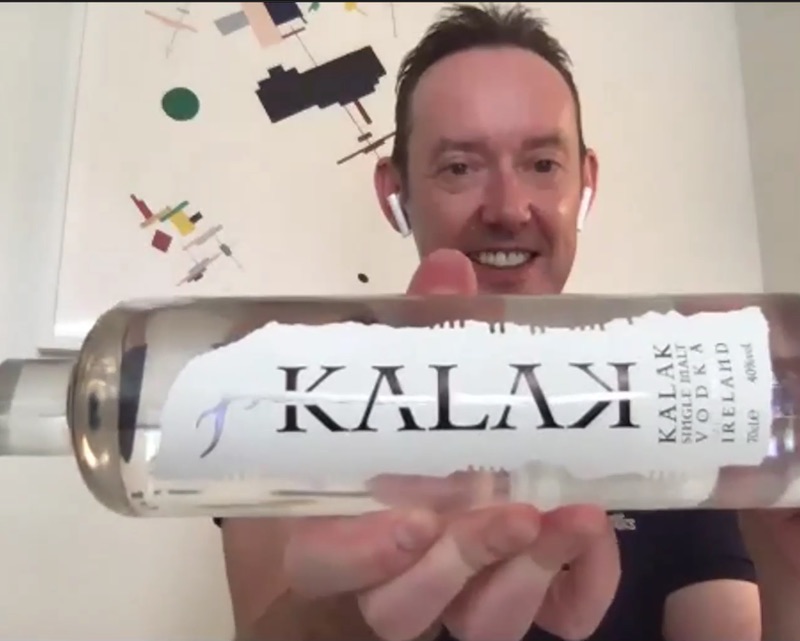
Origin Spirits is the baby of Patrick Shelley (picture above). Founded in 2015, the company currently holds three different products – single malt vodka, gin and whiskey. Patrick previously worked for LVMH and loves his whiskies! However, he dislikes vodka because he couldn’t understand why people enjoy a drink that is tasteless! When Patrick started his own company, he decided to create a vodka that he likes to drink. He found his answer in local Irish barley and he swiftly set to work to develop a series of products made from malted barley.
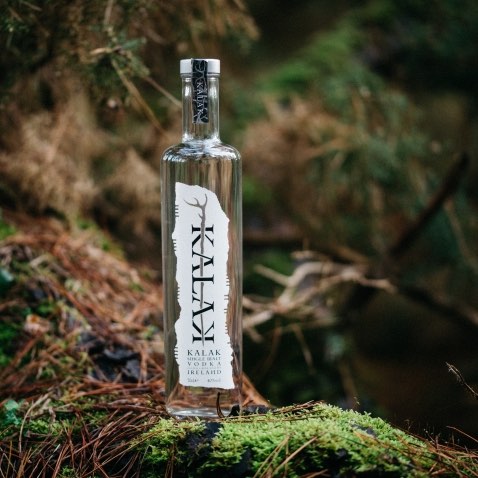
Kalak is the phonetic spelling of the name of an Irish Celtic goddess. The name of the goddess is Cailleach and she is the Queen of Winter. Legends have it that she appears every winter to protect the animals from the harsh weather and when spring arrives, she turns into stone. She is the closest thing to Mother Nature that the Celts had; the embodiment of the darker, more powerful side of nature. Kalak takes her name as a reflection of Ireland’s terroir. The bottles hold Ireland, her weather and her people’s ancient knowledge in distillation.
Origin Spirits sources local Irish barley from the South East of Ireland as the farmers follow a strict chart of sustainability. The wort from the fermentation is distilled four times in a copper still to make sure that the vodka hits 96% abv as per the rules from the European Union. These are then watered down to 40% before bottling. The vodka is clean and smooth, with notes of butter cookies, salt and some fruitiness. It is definitely not the usual vodka that we see in the market!
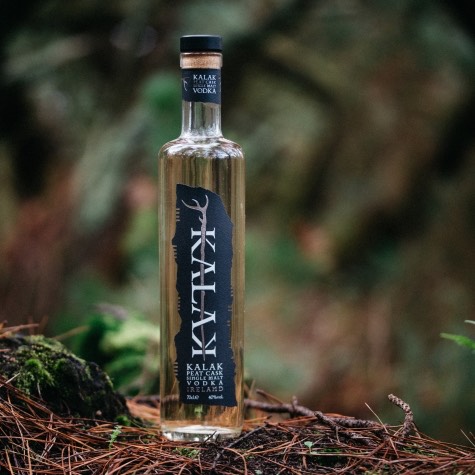
What got us really excited, however, is the PEATED Kalak Single Malt Vodka. The peated version is technically a cask-aged vodka. Origin Spirits buys virgin American oak casks and charred them with peat fire to infuse the cask with smoke. The vodka is put into the casks for four months to allow the spirit to develop a delicious smokey flavour on top of the buttery character from its standard single malt vodka expression.
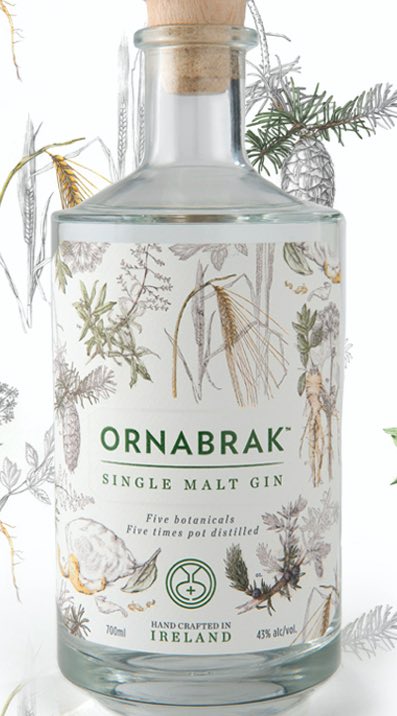
Origin Spirits uses the base spirits from its vodka production to create a floral and complex gin. The four-time distilled base spirit goes through a fifth distillation with five botanicals carefully sourced to emerge as Ornabrak Gin. The five botanticals are juniper berries, lemon peels, angelica roots, Douglas fir, and lemon verbena. The distilled gin is cut at 76% abv and watered down to 43% abv before bottling. The nose is full of citrus peels (think orange and lemon), hint of white pepper, gentle juniper notes and lavendar. The palate is smooth with citrus peels and lavender petals. The finish is full of orange and lavender. It is also drying which makes you want to have more.
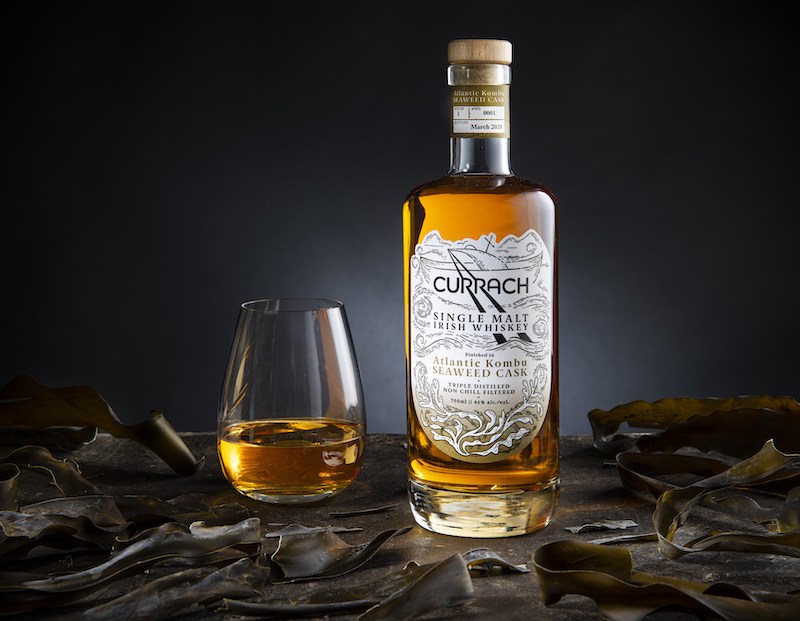
Currach single malt Irish whiskey is the one bottle from the entire offering that got us jumping up and down with impatience. The whiskey matures in ex-bourbon casks before getting a finish in a seaweed-infused cask for two to three months! How exotic is that!?
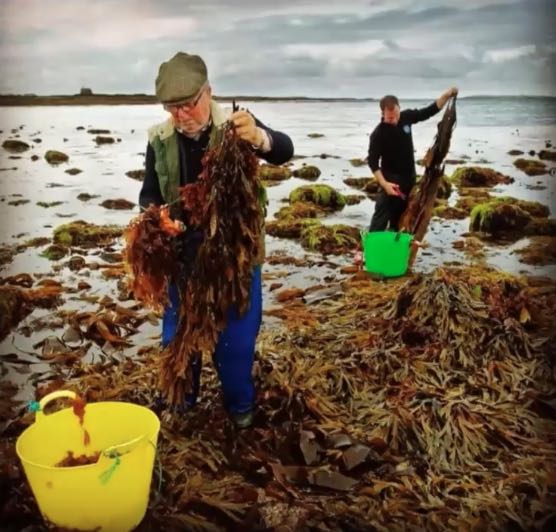
When Patrick first decided to do a whiskey, he wanted to add a new element to his whiskey. As he looks into Ireland’s terroirs, he stumbled upon seaweed. The seaweeds that he uses grow in abundance around Ireland’s coasts and the family of harvesters whom he works with takes pride in their ability to keep the business sustainable through their hand-harvesting technics.
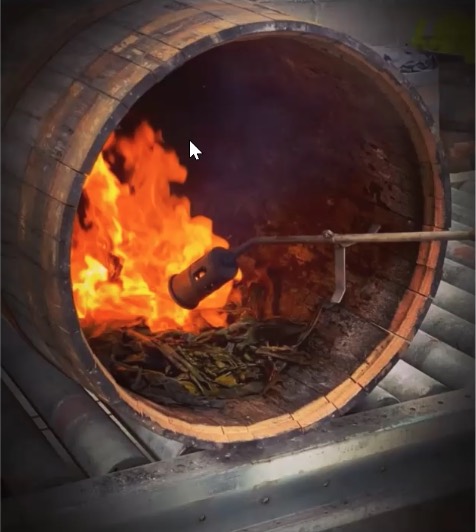
Patrick experimented with seaweed and oak chips extensively before going to full production. What they do is to first cook and dry the seaweed to remove the natural “fishy smell”. The team uses 0.5kg of dried seaweed per virgin American oak cask. They lit a fire using the seaweed as a sort of fuel. Once the fire is stable, they closed the cask and then rolled it around to ensure the burning seaweed reaches every part. They repeated the process six times for each cask.
The nose is full of kombu dashi, sweetness, a hint of sea brine and nuts. Once it opens up, the fragrance of roasted black sesame seeds is undeniable. The palate is nutty, with some sea salt and a dash of kombu dashi. The light smoke couples with roasted black sesame seeds to produce a sweetness that is quite unlike any other whiskies. The finish is extremely long, with some ash and full-on black sesame seeds. It’s really lovely once the whiskey opens up, so be a little patient when trying it!
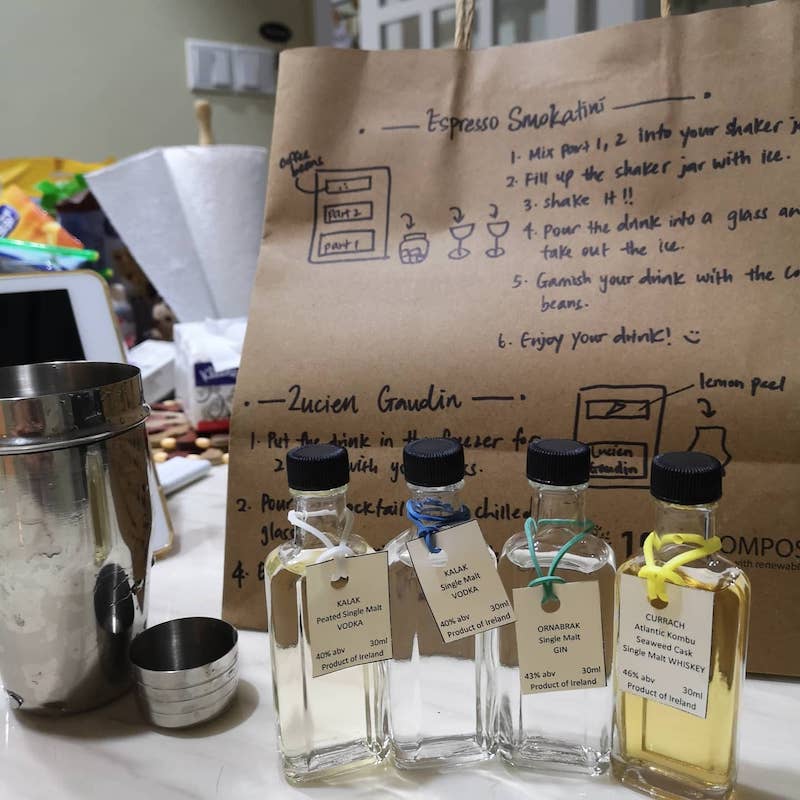
The session also started and ended with cocktails made from The Other Roof. We started with Espresso Smokatini, which is a cocktail made from espresso and PEATED Kalak Single Malt Vodka. It was superbly delicious! The creamy foam increased the enjoyment of the cocktail. Any coffee lover needs to try it!
The second cocktail is Zucien Gaudin, made with Ornabrak Gin. The addition of Campari made the cocktail rather bitter, so it wasn’t as enjoyable as the first one. However, anyone who is in love with Campari would definitely fall in love with this one!

As usual, you can find all the products (except the cocktails) retailing at The Whisky Store. Prices are reasonable so go ahead and buy them! Do tag WhiskyGeeks and The Whisky Store on social media when you crack the bottles open and have a go!
11311 Harry Hines Blvd
Dallas, TX, United States
(555) 389 976
dallas@enfold-restaurant.com
